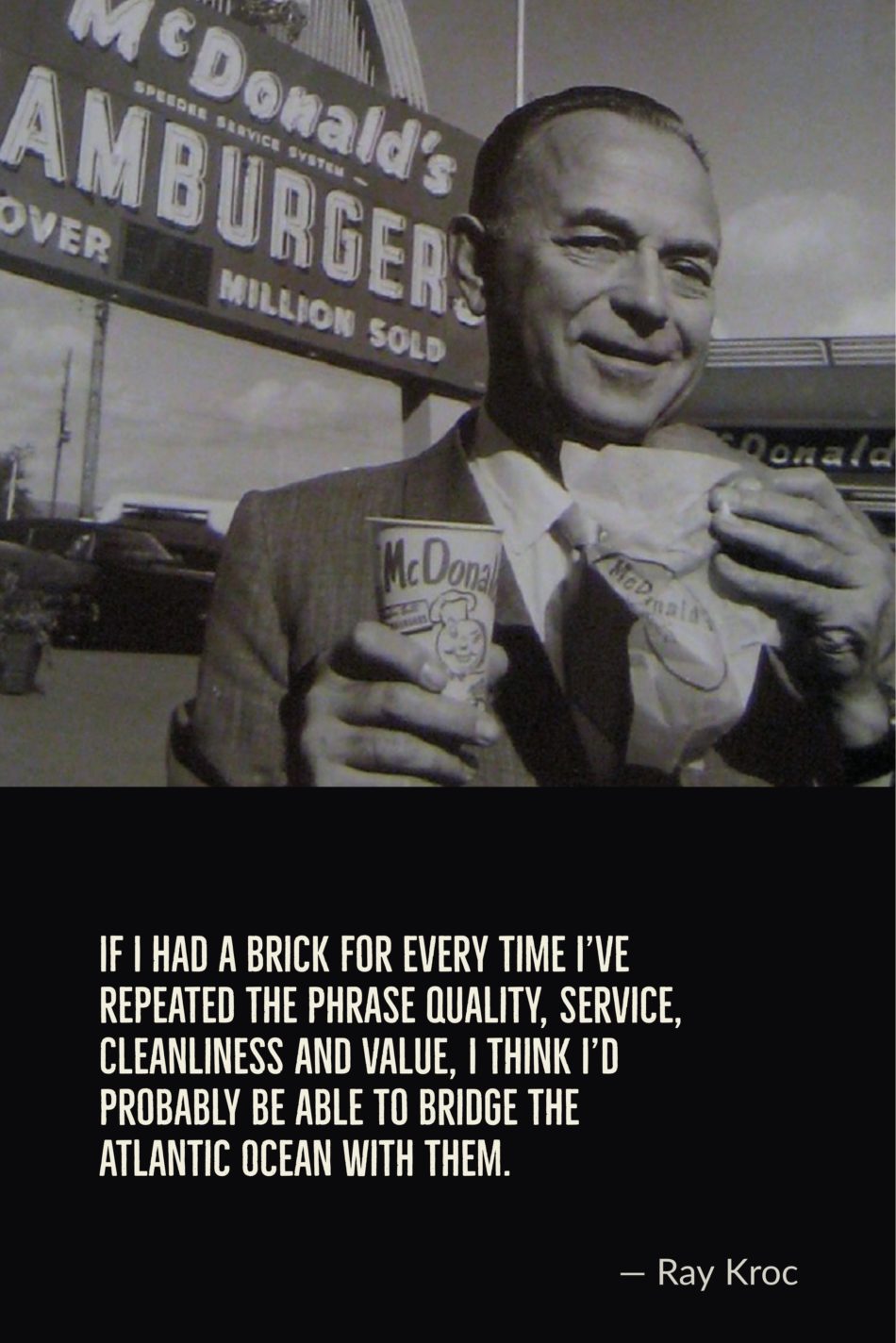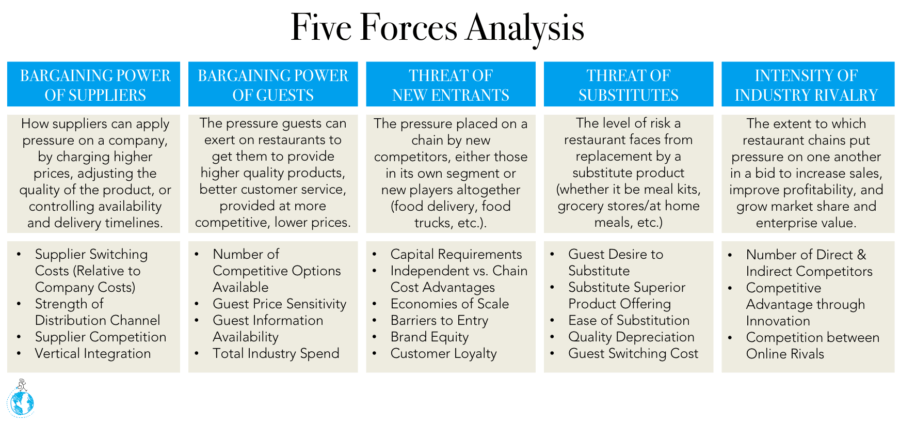Restaurant CEOs around the world are waking up each morning to a slew of headlines impacting not just the industry, but their own companies in particular. For many, opening the paper or checking the headlines on news sites likely brings to mind a gut-wrenching thought: In the age of restaurant delivery, fast-casual concepts, food trucks and meal kits — is my company still relevant? Sadly, we’ve seen dozens of brands fall into bankruptcy as of late, as a result of failing to ask that question (or, at least, asking it much too late).
The complexity of the modern restaurant company (particularly those going cross-border or those preparing for divestiture, mergers, or acquisitions) requires a comprehensive plan and a level of fresh, objective perspective. Oftentimes, CEOs just need a trusted confidante — someone with an experienced eye to evaluate their business but also to provide a holistic perspective on how to position the company moving forward.

“Relevance” has a deeper, broader meaning in today’s market than the traditional logos or slogans of yesterday and, similarly, a modern restaurant brand audit requires much more than just auditing a company’s marketing efforts. What’s missing from most audit initiatives and endeavors is that they’re typically delegated down, rather than being a centralized responsibility of the executive team.
For restaurant chains experiencing sagging sales; feeling competitor pressures more strongly than ever; or even just having trouble prioritizing conflicting demands, it’s likely time to take a more thorough look at the restaurant industry and how it’s impacting the company at hand.
WHAT IS A RESTAURANT BRAND AUDIT?
What’s your brand promise and what sets it apart? If even the most experienced and highest paid executives in a company can’t answer that question consistently, how can a company expect it to get better as that responsibility cascades down the organizational chart?

For a restaurant, a brand audit gets to the purpose, the promise, the personality, the positioning, and the “why” of a chain — the compelling vision that people are inspired by and want to play a role in helping effectuate. But, even more than that, it’s about determining how the “why” is being communicated and how well that resonates with key stakeholders, employees, leadership, guests, and the media.
While a marketing or branding agency might be hired to freshen up a chain’s font or its logo, it won’t have the operational know-how, or fully understand the psychology of the industry, to thoroughly measure and assess a brand’s meaningfulness and relevance.
The most intensive (and, therefore, the most valuable) brand audit can help identify gaps as well as opportunities both inside and outside the organization, even the threats a chain may not be currently considering. In the restaurant industry, new threats are coming from seemingly everywhere, whether it’s a fast-casual chain or Amazon or any of the other dozens of things keeping restaurant CEOs awake at night.
WHY SHOULD A RESTAURANT UNDERTAKE A BRAND AUDIT?
Even the most successful players have failed to take comprehensive stock of their brand and, as a result, poured money into something that doesn’t mesh with the company’s DNA. Of course, there’s no point in making more efficient that which shouldn’t be done at all. A top-to-bottom audit of a brand — revealing the forces weighing on it externally and the factors impacting it internally — makes it much more clear where investment should flow.
A chef wouldn’t take the time to prepare and plate a dish and still expect it to be just as fresh and relevant three years later. Likewise, a brand audit should happen every three years, at least, and examine everything from political and economic factors weighing on a business to company culture and organizational hierarchy.
WHAT SORTS OF QUESTIONS SHOULD BE ASKED DURING A BRAND AUDIT?
So, how does one know if their brand is relevant? And how do they ensure it retains its importance? To start, by asking questions, some of which may include:
ORGANIZATIONAL PURPOSE
- When was the last thorough and expert review of the brand positioning strategy (including menu, training, corporate culture, and other extensions of the brand)?
- Are we actively working to enhance the strength of our brand positioning and perceptions?
- Are we tracking the right KPIs across the system and functional areas?
- Do we have the right tools to measure and monitor performance, both internally and against competitive threats?
- Are we clear on what our key brand promises are (or should be)? How well are we executing on these key promises?
- How can we better accentuate and capitalize on our strengths while mitigating our weaknesses?
- Do our associates see us in the way we want to be perceived? Have we created the right environment for that to thrive?
- Do we have a culture manifesto? How are we quantifying what company culture and morale across the organization is?
- What are the findings and opportunities across other critical areas, including: international expansion, real estate and location strategy, menu engineering, new product development, packaging, advanced analytics and performance measurement systems, labor optimization, associate engagement, and franchisee engagement?
GUEST EXPERIENCE
- Does the digital manifestation of the brand match up with the physical manifestation, and the intent of the brand?
- How are we being perceived by our consumers, relative to our competitors?
- Do we have the right quality assurance and quality control procedures in place?
- Do we have the right ways of measuring guest satisfaction, and perception of relevance with our consumer?
- What are guests saying about our organization? What are employees saying about our company? How do these sentiments affect performance and what are the appropriate actions to take to address opportunities?
EXTERNAL FACTORS
External factors, determined utilizing PEST (Political, Economic, Social, and Technological) analysis and Five Forces analysis, are useful frameworks for analyzing the level of competition within an industry and business strategy development. These draw upon industrial organization economics to derive the external forces that determine the competitive intensity of an industry.
- How may potential political changes (including minimum wage increases, taxes, import laws, menu labeling, immigration laws, etc.) be impacting our business? What efforts can we take to address/mitigate these impacts?
- Are we taking the right approach to implementing technology? How should we frame and prioritize technology upgrades?
- How might food costs and commodity prices change? How should we be planning this into our overall menu and culinary development strategy, and making sure we are in alignment with consumer dining behaviors (factoring in what’s now and what’s next)?
- How might increased food cost, labor cost, and rent/occupancy costs impact our business?
- How might changing demographics impact new floor plan layouts and future location strategy?
- Have we performed a Five-Forces analysis of our current brand standing?

THE IMPORTANCE OF A RESTAURANT’S RELEVANCE (AND THE ROLE OF AN AUDIT IN THAT PURSUIT)
Even the most well-oiled machines need a tune up from time to time in order to remain high-performing. For restaurant brands, relevance is about finding the right balance between continuity and change. The questions above serve as a solid outline of how to strike that balance. Those who just go through the motions without a solid understanding of their brand will suffer of course, and those who effectively monitor their brand’s performance will need to follow through decisively on what they’ve learned.
With so many moving parts (particularly for those chains with multiple brands operating in more than one region), it’s easy to fall into the trap of feeling too busy with day-to-day operations to take the time to conduct a comprehensive brand audit. But knowing what drives the market, the consumer, and the brand in particular (and taking into account a myriad of other factors, as mentioned above), will ultimately help differentiate a chain and help it remain relevant.
While it’s perhaps easy to criticize those whose brands fall out of favor and relevance, and fall on hard times as a result, it happens to a lot of organizations. Those that wait until the symptoms have become problematic, though, wind up making headlines for all the wrong reasons. And if a brand’s already generating negative headlines, it’s waited too long. Not only does a restaurant brand audit serve as a way to avoid that — instead allowing a restaurant to make the news in a positive way — it ensures that chain’s relevance continues.

